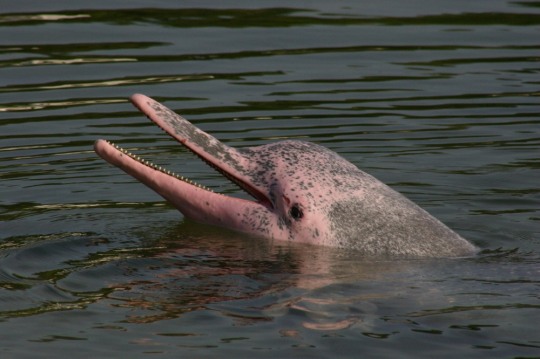
Since the National Marine Fisheries Service has proposed to designate Taiwan's humpback dolphins as endangered species, pink dolphins have begun receiving international attention.
The number of pink dolphins, also known as Taiwan white dolphins, is estimated to be 54 to 74 by the 2007-2010 data, which is actually known to be on the verge of extinction.
In Taiwan, this dolphin, also known as Matsu's fish, is actually white, but appears pink in human eyes and gray as it gets older.
Dolphins are about nine feet long and have relatively small dorsal fin growing on the back.
The US Department of Fisheries Administration has rejected a petition in 2014 to register the dolphin as a threat to the Endangered Species Protection Act because Taiwan dolphins have not met the criteria for endangered species as Indo - Pacific humpback whales.
However, the US Center for Biological Diversity, the Wild Earth Guardians, and the Animal Welfare Institute filed another petition in March 2016 to find that the pink dolphin is actually another subspecies. The petition in 2016 is finally spurring the proposal to classify Taiwan dolphins as endangered species again.
A marine scientist at Abel Valdivia CBD says, "These rare dolphin species need protection to survive. If we do not work together to save them, this cetacean will disappear forever. The United States is well aware that international cooperation is needed to prevent the extinction of certain species. "
Cetaceans are marine mammals that contain whales, dolphins, and the like.
They generally have a long life span but are not likely to survive to breeding age and have a low reproductive rate.
The decline of adult dolphins that can reproduce due to human fissure or toxic pollution emissions from ships further increases the threat of extinction of this species.
The US Fish and Wildlife Service, which manages the Endangered Species Protection Act, said 99 percent of the species under protection were alive.
Unfortunately, however, marine organisms are under protection, with significantly lower rates than land-based organisms.
Katherine Brogan of NOAA Public Affairs said in an interview, "Endangered species protection for alien species comes from prohibiting certain activities in the form of trade, including imports, exports, acquisitions, commercial activities and foreign commerce."
"Also listed on the Endangered Species Act is a global awareness of the endangered species of the species and can lead to national efforts," he added.
![[Parenting] Endangered Pink Dolphin parenting endangered pink dolphin](https://moontore.com/wp-content/uploads/2019/02/parenting-endangered-pink-dolphin-1200x700.jpg)


